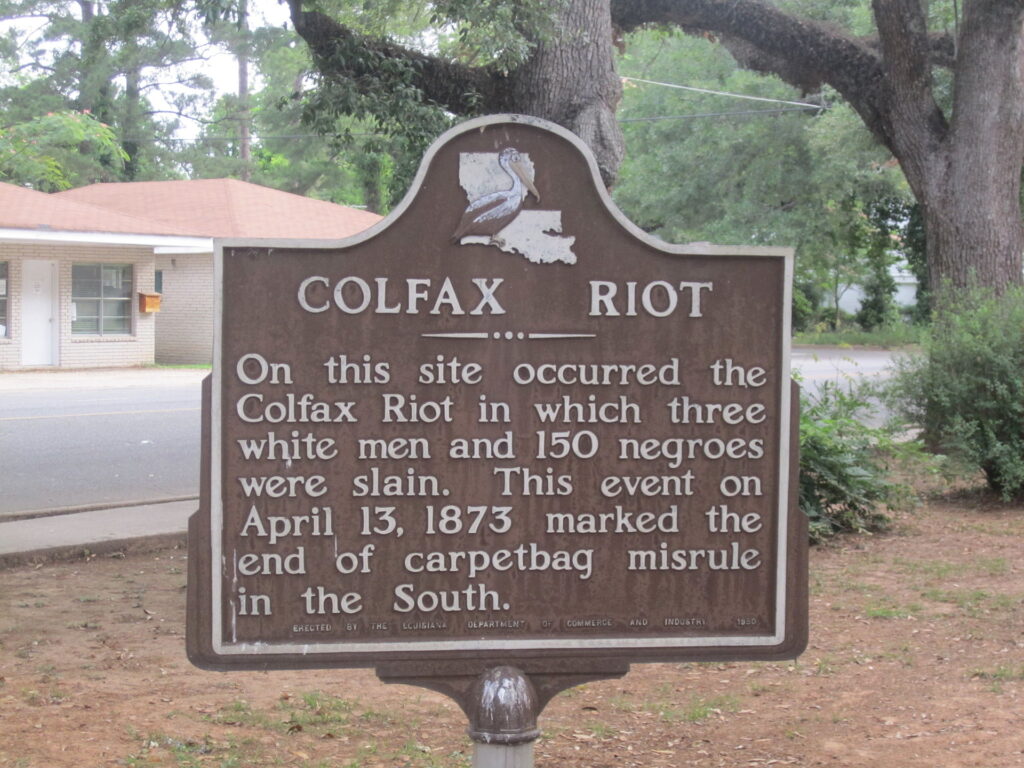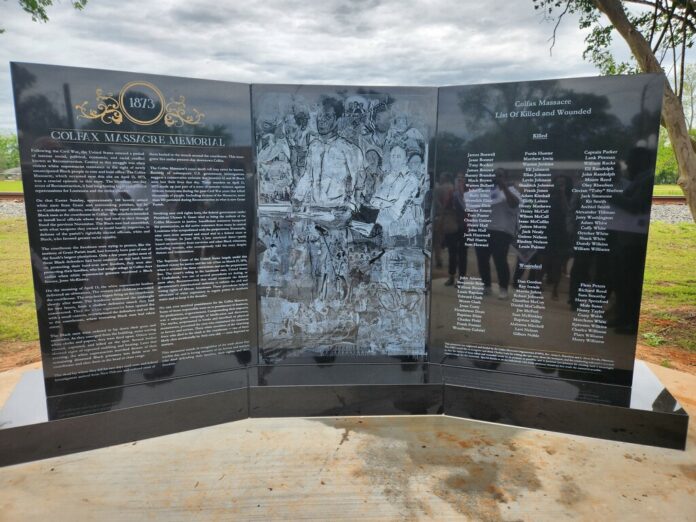This is a weekly series by Verite News Fellow J’Brionne Helaire recounting historic moments in Louisiana history.
Colfax, LA (4/16/2023) – On this day in 1873, approximately 150 African American men were murdered in Colfax, Louisiana by white militia men on Easter Sunday.
During Reconstruction, the period after the Civil War in which newly freed slaves sought social, political and economic power, white Republicans and their Black allies in Louisiana had won the 1872 election to keep control of the state, but the Southern white Democrats contested the outcome. Dual governments were established in Grant Parish which led to arguments over control of the courthouse in Colfax, a mostly Black rural outpost near the Red River.
A group of Black men feared white supremacists would attempt to take over the local government and occupy the courthouse in April 1873. Others from the Black community, including women, children and other men with guns, also gathered near the courthouse.
Soon after, about 150 white men, including former Confederate soldiers and members of the Ku Klux Klan, surrounded the courthouse. According to a report in 64 Parishes, “After weeks of mounting tension and incidents of violence, the confrontation at Colfax erupted on Easter Sunday, April 13, 1873.”
The white militia, armed with a small cannon, fired into the courthouse. The Black men fired their weapons, and a battle ensued.
LeeAnna Keith, author of the book, “The Colfax Massacre: The Untold Story of Black Power, White Terror and the Death of Reconstruction,” wrote for 64 Parishes that, “Two white men died, including James West Hadnot, thought to be the leader of the local white supremacist organization, the Knights of the White Camellia.”

Hadnot’s death enraged the white militia and they began firing their weapons at the Black crowd that had gathered near the courthouse.
But ultimately the Black men were outgunned and outnumbered and surrendered. A Smithsonian magazine report said that some Black men were shot and some were hanged. Others outside the courthouse were captured as they tried to flee, and executed in front of their family members.
It was estimated that between 60 and 150 Black people were killed in the Colfax Massacre of 1873.
Historian Eric Foner, author of “Reconstruction: America’s Unfinished Revolution, 1863-1877,” described the Colfax Massacre as “the bloodiest single instance of racial carnage in the Reconstruction era.”
“The Colfax massacre taught many lessons, including the lengths to which some opponents of Reconstruction would go to regain their accustomed authority,” Foner wrote. “Among Blacks in Louisiana, the incident was long remembered as proof that in any large confrontation, they stood at a fatal disadvantage.”
Nine men were charged with violating the Enforcement Acts of 1870 and 1871, which were created to end violence against Black Americans after the Civil War and give the president the power to use military force to protect Black Americans. The jury convicted three of the white men on conspiracy charges. But in 1876, the US Supreme Court overturned their convictions in the case United States v. Cruikshank, finding that, “the Enforcement Acts applied only to actions by the state, not by individuals.” The ruling limited the ability of the federal government to prosecute racial crimes and left the responsibility to the states.
In 1951, a marker was placed at the site of the massacre, describing it as a “riot” and “the end of carpetbag misrule in the South.”
On April 13, the 1951 marker was removed and replaced with an updated plaque. The new Colfax Massacre Memorial features a comprehensive description of the massacre as well as the names of the men who died and were wounded during the massacre.
Source: Verite, Author: J’Brionne Helaire, Creative Commons





